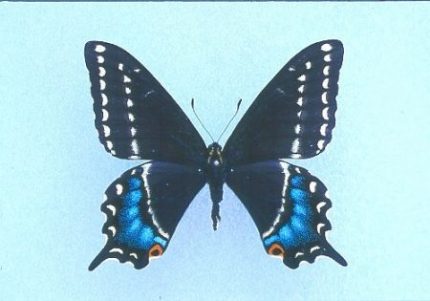Imagine you are walking through the Black Ridge area of the Colorado National Monument, admiring the dusty hunks of sandstone and dramatic, red-walled canyons. You see a large, swallowtail butterfly flit past, and using your keen vision you observe that it is quite unlike any others you’ve spotted before. You return to this place up on the canyon rim several times, hoping for a another glimpse.
There it is! The chase begins. You follow the winged creature as far as time and high cliff ledges will allow, then WOOSH! With a swoop of a net, the butterfly is now in your possession. You catch several more and send them over to your buddy Frank Cross, who is, conveniently, the Curator of Insects at the Colorado Museum of Natural History in Denver. Frank sends the samples to specialists, who study the butterflies and cannot match them with any others. A new species has been discovered and recognized through out the world.

Will Minor. Image source: The Daily Sentinel.
This is the way Will Minor, an early Mesa County resident, discovered the extremely rare Papilio Indra Minori in 1936 on our very own Colorado National Monument.
According to Dr. Wayne Whaley, a Utah-based butterfly expert, the Papilio Indra Minori is mostly found in parts of western Colorado and eastern Utah. Papilio is latin for “butterfly,” and this specific butterfly is in the swallowtail butterfly family, Papilionini. All butterflies feed on their specifically preferred host plants, or food plants. One way to discover a butterfly’s main dwelling area is to figure out what is is feeding on. In the sound clip below, Will Minor describes his experience discovering this rare butterfly and how he learned what food plant the Minori prefers to feed on:
Will Minor was an interviewee for the Mesa County Oral History Project. He moved to Fruita in 1919, and went to school there during his childhood. He enjoyed climbing around the Colorado National Monument as a young man, and took up photography in the 1950’s. His love of the great outdoors and photography inspired him to hike and travel all through out Mesa County, Colorado, and Utah to partake in nature photography. Will was also a nature writer: you can check out his book, “Footprints In the Trail” from the Mesa County Library catalog.


